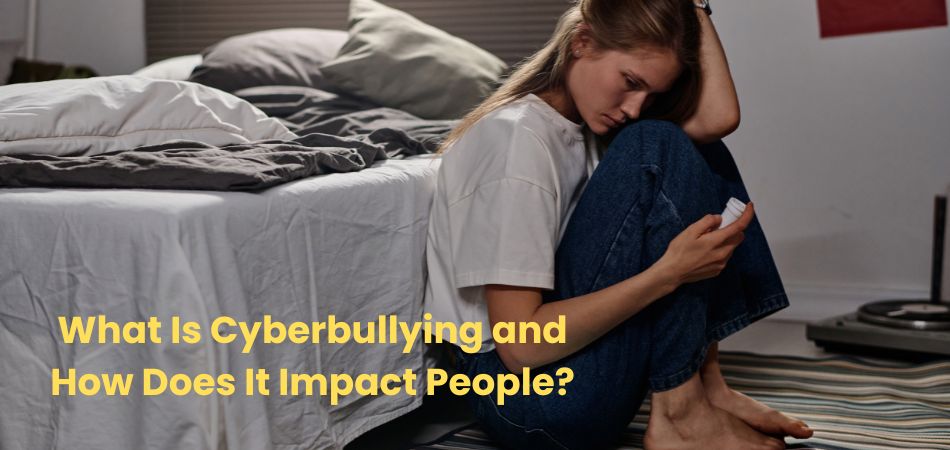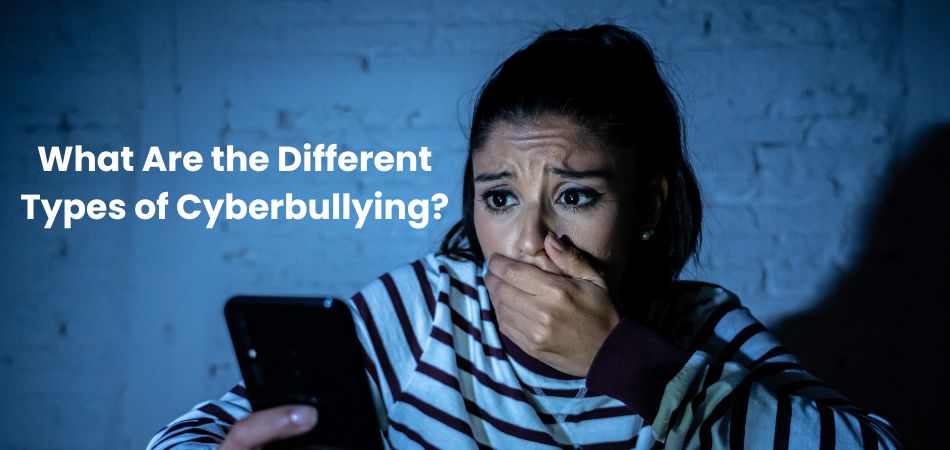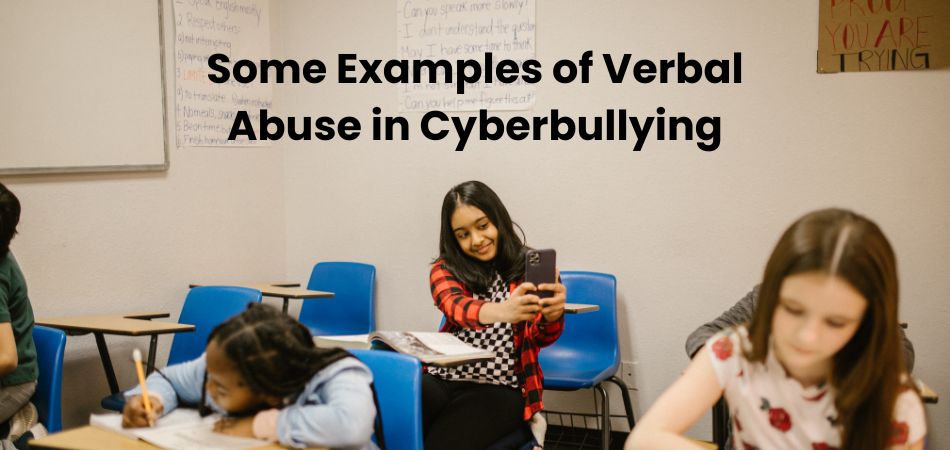Cyberbullying has become a pervasive issue in our digital age, impacting individuals across all age groups. With the rise of social media, online gaming, and instant messaging, the ways people can be targeted have grown more complicated and harmful.
But what are the different types of cyberbullying? Recognizing the forms it can take is crucial for addressing its impact effectively.
Cyberbullying includes harassment, social exclusion, trickery, outing or doxing, cyberstalking, impersonation, and fraping. Each type involves harmful actions that impact victims emotionally and socially.
In this blog, we’ll explore the various forms of cyberbullying, shedding light on their characteristics and offering insights on how to combat them.
What Is Cyberbullying and How Does It Impact People?
The act of cyberbullying involves harassing, intimidating, and harming others through online actions such as sending hurtful messages, sharing embarrassing content, and spreading rumors.
Unlike traditional bullying, cyberbullying can occur around the clock, reaching victims in the comfort of their homes through devices like smartphones and computers. This constant accessibility amplifies its impact, making it difficult for victims to find respite or escape.

The effects of cyberbullying can be profound and far-reaching. Emotionally, victims often experience feelings of shame, fear, and anxiety, which can escalate to depression or even suicidal thoughts.
Socially, it can lead to isolation as victims withdraw from friends and online spaces to avoid further harassment. In severe cases, the damage to one’s reputation can affect academic or professional opportunities.
The knowledge of the pervasive nature of cyberbullying is essential for recognizing its serious consequences. By addressing the issue head-on, we can work towards creating a safer and more supportive digital environment for everyone.
How Does Cyberbullying Affect Your Mind?
Cyberbullying can take a heavy toll on mental health, leaving lasting emotional scars. Victims often experience intense feelings of anxiety, fear, and sadness due to the relentless nature of online harassment.
The anonymity of cyberbullies can heighten these feelings, as victims may not know who is targeting them, leading to paranoia and mistrust in their personal relationships. Over time, these emotions can spiral into more severe mental health issues, such as depression or low self-esteem.
The psychological effects of cyberbullying can also impact daily functioning. Victims may struggle to focus at school or work, lose interest in activities they once enjoyed, or withdraw socially to avoid potential ridicule.
In extreme cases, prolonged exposure to cyberbullying can lead to self-harm or suicidal thoughts. Recognizing these effects is crucial for early intervention and ensuring that victims receive the support they need.
What Are the Different Types of Cyberbullying?
There are many forms of cyberbullying, each with its own tactics and effects. To identify and address harmful behaviors online, you must understand these types. Below, we explore some common types of cyberbullying, their characteristics, and their impact.

Harassment
Harassment is the repeated sending of abusive or threatening messages. It can include direct insults, derogatory comments, or persistent spamming. Victims may feel overwhelmed and unsafe, as the attacks often continue for extended periods. Harassment is one of the most overt and aggressive forms of cyberbullying.
Social Exclusion
Social exclusion involves deliberately leaving someone out of online groups or activities. This can happen in group chats, social media platforms, or online gaming communities. The exclusion often leads to feelings of isolation, rejection, and low self-esteem for the victim. It’s a covert yet harmful tactic that can deeply affect relationships and mental health.
Trickery
Trickery occurs when someone gains a victim’s trust only to deceive them later. This can involve persuading the victim to share secrets or personal information and then using it against them. Victims of trickery may feel betrayed, foolish, or humiliated. The emotional impact often lingers, damaging the victim’s ability to trust others.
Outing or Doxing
Outing involves publicly sharing someone’s private information without their consent, while doxing exposes sensitive personal data. This type of cyberbullying aims to embarrass or endanger the victim. Victims of outing or doxing often feel violated and vulnerable, as their privacy is stripped away. The repercussions can range from online humiliation to real-world threats.
Cyberstalking
Cyberstalking is a form of online harassment that involves persistent monitoring and unwanted contact. Stalkers may send threatening messages, track a person’s online activities, or even attempt to locate them in real life. This behavior creates a constant sense of fear and anxiety for the victim. The invasive nature of cyberstalking makes it one of the most severe forms of cyberbullying.
Impersonation
Impersonation involves creating fake profiles or pretending to be someone else online. This tactic is often used to spread false information, harm reputations, or exploit others. Victims may face confusion and reputational damage as others believe the impersonator’s actions reflect their character. This type of cyberbullying can have lasting social and emotional consequences.
Fraping
Fraping involves hacking into someone’s social media account and posting inappropriate or offensive content. This can damage the victim’s reputation and relationships, as others may assume the posts are genuine. Victims often feel embarrassed, powerless, and anxious about regaining control over their accounts. Fraping highlights the importance of securing online profiles with strong passwords.
5 Effects of Cyberbullying That You Should Know
Cyberbullying doesn’t just stay online; its impact can extend deeply into every aspect of a victim’s life. From emotional distress to social withdrawal, the consequences can be devastating and long-lasting. Here are some crucial effects of cyberbullying that highlight why it’s essential to address and prevent it.

1. Emotional Distress
Cyberbullying can lead to intense feelings of sadness, anxiety, and fear. Victims often struggle with feelings of helplessness as the attacks can occur anywhere and anytime. These emotional wounds can worsen over time, sometimes leading to depression or other mental health issues.
2. Low Self-Esteem
Being targeted online can severely damage a person’s self-confidence. Victims may begin to doubt their worth or blame themselves for the bullying. This can affect their ability to engage in social or academic activities, further isolating them.
3. Academic or Professional Decline
Cyberbullying often affects focus and performance in school or work. Victims may feel too distracted or anxious to concentrate on tasks or attend classes. Over time, this can result in failing grades, missed opportunities, or strained professional relationships.
4. Social Withdrawal
Many victims withdraw from social activities or online interactions to avoid further harassment. They may feel isolated and disconnected from friends, family, or their community. This social isolation can exacerbate feelings of loneliness and make it harder for them to seek support.
5. Physical Health Problems
The stress caused by cyberbullying can manifest in physical symptoms such as headaches, sleep disturbances, or fatigue. Chronic stress may also weaken the immune system, making victims more prone to illness. Over time, these physical effects can further compound the emotional and mental toll of cyberbullying.
How Does Social Media Contribute to Cyberbullying?
Social media platforms provide a vast space for communication, but they also create opportunities for cyberbullying. The accessibility and anonymity offered by social media make it easier for individuals to target others without facing immediate consequences.
Features like public commenting, direct messaging, and group chats can be misused to spread hurtful messages, share embarrassing content, or exclude someone from conversations. Additionally, the viral nature of social media amplifies the impact, allowing harmful content to spread rapidly to a wide audience.
The design of social media platforms often encourages constant engagement, making it difficult for victims to escape harassment. Notifications, tagging, and persistent visibility of harmful posts can create an overwhelming environment for those targeted.
This persistent exposure can lead to significant emotional distress, including anxiety and depression. The interactive nature of social media further complicates addressing cyberbullying, as it often happens in real-time and can involve multiple perpetrators.
Some Examples of Verbal Abuse in Cyberbullying
Verbal abuse in cyberbullying involves using words to hurt, intimidate, or humiliate someone online. It often takes the form of harmful messages, comments, or posts designed to attack a person’s character or self-worth. Here are five common examples of verbal abuse in cyberbullying and how they affect victims.

- Insults and Name-Calling: Bullies often use cruel insults or derogatory terms to demean their victims online. These attacks can make the victim feel worthless and deeply affect their self-esteem.
- Threatening Messages: Cyberbullies may send direct threats of harm to intimidate or scare their target. These threats can leave victims feeling unsafe, even in the comfort of their homes.
- Spreading Rumors: Sharing false or damaging information about someone online is a common form of verbal abuse. These rumors can quickly spread, damaging the victim’s reputation and relationships.
- Mocking Personal Attributes: Bullies may target specific characteristics like appearance, abilities, or interests to ridicule someone. This form of abuse can cause lasting emotional pain and self-doubt for the victim.
- Persistent Harassment: Sending repeated, hostile messages to overwhelm or wear down the victim is a common tactic. This relentless abuse can lead to feelings of anxiety, stress, and helplessness.
How Do You Prevent Cyberbullying?
Preventing cyberbullying requires proactive steps to create a safer digital environment. By promoting awareness, implementing protective measures, and inspiring empathy, we can reduce the risks and address harmful behavior effectively. Here are some strategies to prevent cyberbullying and encourage positive online interactions.
1. Educate About Cyberbullying
Raising awareness about what cyberbullying is and its impact is essential. Schools, workplaces, and families can provide training on recognizing and addressing online harassment. Educated individuals are more likely to stand against cyberbullying and support victims.
2. Encourage Open Communication
Creating a safe space for discussing online experiences helps prevent bullying. Encourage children, friends, or coworkers to share concerns without fear of judgment. Open communication makes it easier to identify and address cyberbullying early.
3. Promote Digital Etiquette
Teaching respectful online behavior is key to reducing harmful interactions. Emphasize the importance of thinking before posting or commenting and treating others kindly. Modeling positive behavior can inspire others to do the same.
4. Strengthen Privacy and Security Settings
Encourage individuals to use strong passwords and adjust privacy settings on social media. Limiting who can contact or view profiles helps reduce exposure to potential bullies. Being vigilant about personal information online also minimizes the risk of misuse.
5. Report and Block Abusive Behavior
Most platforms offer tools to report and block users engaging in cyberbullying. Encourage victims or witnesses to use these features to prevent further harm. Reporting abuse helps platforms take action and sends a message that cyberbullying will not be tolerated.
FAQs About Cyberbullying
Cyberbullying is a complex issue, and many people have questions about how it happens, who it affects, and what can be done. Taking effective action against cyberbullying requires understanding its nuances. Below are some frequently asked questions about cyberbullying with concise answers to help shed light on this issue.
1. Who Are the Most Common Targets of Cyberbullying?
Cyberbullying can affect anyone, but children, teenagers, and young adults are often the primary targets. Individuals who are active on social media or gaming platforms may be more vulnerable. Additionally, those perceived as “different” based on their appearance, beliefs, or interests are frequently targeted.
2. Why Do People Engage in Cyberbullying?
People cyberbully for various reasons, including jealousy, a desire for power, or a lack of empathy. Some bullies act out due to their own insecurities or struggles. The anonymity of the internet also makes it easier for people to behave in ways they might not in person.
3. What Are Some Warning Signs That Someone Is Being Cyberbullied?
Common signs include sudden changes in mood, reluctance to use digital devices, and withdrawal from social interactions. A drop in academic or work performance may also indicate distress caused by cyberbullying. Victims might appear anxious or upset after being online.
4. How Can Friends and Family Help a Victim of Cyberbullying?
Offer emotional support and listen without judgment to help the victim feel understood. Encourage them to document incidents of cyberbullying and report the abuse. Helping them regain confidence and providing resources for professional help can also make a significant difference.
5. Are There Laws Against Cyberbullying?
Yes, many countries have laws or regulations addressing cyberbullying, though specifics vary by region. Some laws classify severe cases as harassment, defamation, or stalking, which carry legal consequences. Reporting incidents to authorities can help ensure that perpetrators are held accountable.
Final Words
Cyberbullying is a serious issue that affects individuals across all age groups, often leaving lasting emotional and social scars. Being aware of the dynamics of online harassment, including what are the different types of cyberbullying, is essential for identifying, addressing, and preventing harmful behavior.
From social exclusion to cyberstalking, each form of cyberbullying poses unique challenges, but with education, empathy, and proactive measures, we can mitigate its impact.
By spreading a culture of respect and accountability online, we can create safer digital spaces where everyone feels valued and protected. Together, we can take meaningful steps toward ending cyberbullying.
